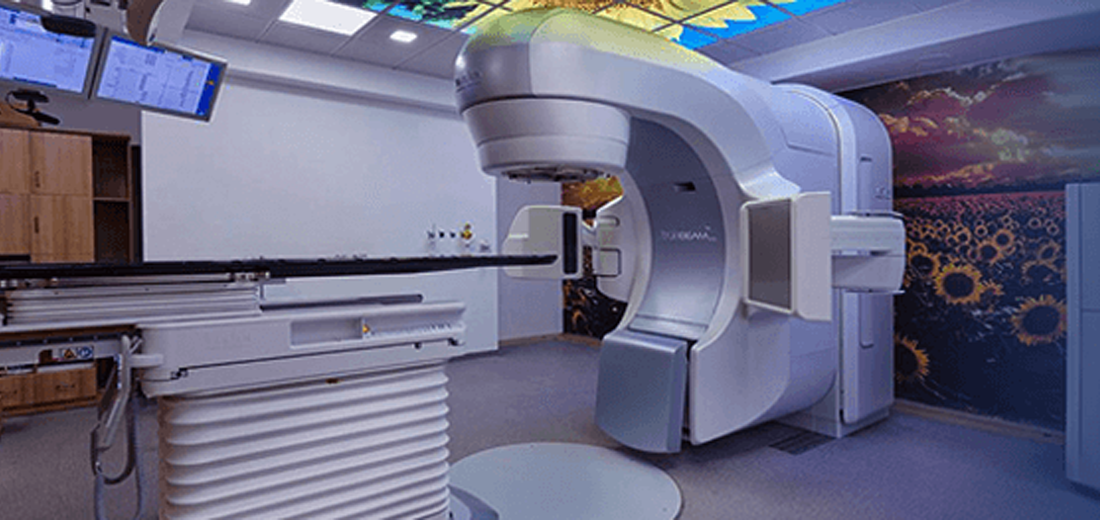Radiation therapy has seen tremendous technological evolution during the last two decades. Treatments have become mostly automated and robotic. The most significant fallout of this is the dramatic decrease in the side effects and improved contribution to the cure rates. Radiation earlier is known to have long term effects appearing even after decades precipitated with advancing age. Radiotherapy before the year 2000, would also cure the significant number of patients but would leave the residual effect for the rest of life in some patients. Presently radiation therapy is far safer than before the turn of the century. Technological developments also led to the concept of stereotaxy, i.e., tracking the location of the tumour within the three-dimension space of the body instant to instant and focussing on the tumour, by the convergence of innumerable pencil size beams (beamlets) into the cancer tissue avoiding the healthy tissue to a negligible extent.
Despite all these welcome developments and no toxicity that can affect the life of the majority patients later in life, presently the technology is in progress to avoid even the minimal effects of radiation which may not cause any apparent complaints. The fundamental principle of radiation therapy treatment has always been ALARA principle i.e., As Low As Reasonably Achievable, without compromising the cure. The approval authorities accept any technique that gives lessor dose to the healthy tissue with the same treatment to the cancer tissue as to the new form of radiation therapy. The typical examples are Intensity Modulated radiotherapy / Image-Guided Radiotherapy, which made their entry into India around 2005. Radiation therapy is the only type of “drug”, where we can calculate the exact amount of dose that is received by healthy tissues anywhere in the body and persistent attempts are made to reduce this, even though they are within the acceptable limits.
With this ALARA principle, a technique of radiation that has come into practice in the treatment of left-sided breast cancer is DIBH (Deep Inspiratory Breath Hold technique). Gone are the days of mutilating surgery in women for breast cancer. Now, the generally acceptable (except in few patients) breast cancer management is first chemotherapy, followed by surgery where just the cancer lump with or without lymph nodes in the same side axilla is removed (or vice versa) and the breast is spared. Sometimes plastic surgery may also be required. Finally, many would require radiation therapy (followed by long term hormone therapy, if required). Fundamentally, this most humanistic approach is evolved, with better cure possibility, with the sole purpose of minimal physical and psychological changes for women with breast cancer.
We know that in the left-sided breast cancer, the area of the breast that we treat is closer to the heart. It is also realized that during breathing, in deep inspiration, the heart moves further away from the intended radiation treatment area, significantly. Although the dose to the heart is still within the tolerance limits and not expected to cause side effects, following the principle of ALARA, technological innovation is developed to reduce the dose to the heart further. The treatment machine is automated to deliver the radiation during the deep inspiration.
The technique is DIBH - Deep Inspiratory Breath Hold. Simply put, patients need to take a deep breath and hold it there, as long as comfortably possible. The treatment machine gets triggered to deliver the intended dose at this time, and the instant expiration begins the radiation beam switches of automatically. This can go on a few cycles and treatment gets completed. The present-day machines are designed to do this job very quickly and may require, generally, 3 to 4 deep inspiratory breath-hold to complete the treatment session. This process continues during the next day and so on, till the end of all sessions. The technique is very precise, due to automation & robotic nature of the present-day machines. The beam does not get switched on till the intended level of inspiration happens, e.g. treatment does not occur if there is a minimal inspiration.
Other uses of DIBH
As mentioned earlier, another revolutionary development in radiation therapy is the development of radiosurgery techniques using stereotaxic principles. Unlike, radiation therapy here, the radiation is delivered to the visible cancer lesion, generally in 1 to 5 sessions. In regular radiation therapy, one treats not only the visible cancer tissue but also the possible invisible microscopic cancer infiltration to the surrounding areas and the nearby lymph nodes. Hence, the radiosurgery is useful in only selected situations, although recently its usage is increasing sharply. The radiosurgery, when used in the conditions of the brain, both cancer and non-cancer, termed as SRS (Stereotactic Radio-Surgery). When used in the rest of the body, it is termed SBRT (Stereotactic Body RadioTherapy). The recent term, more often used, is SABR (stereotactic Ablative Body Radiotherapy) to highlight the approach where the intent is to cut it off biologically.
The tumours in the chest and upper abdomen move within the body, during breathing, in complex trajectory. Since a higher dose is being delivered with SABR, precisely to the cancer tissue one need to track the tumour during the delivery of the radiation dose. Here, DIBH is invaluable again. With the tumour “frozen” in deep inspiratory phase, without any movements, radiation therapy gets triggered during this phase. Treatment beams converge from many directions focussing on the cancer tissue. The whole process is imaged and confirmed. Another great advantage of the modern machine is that the whole actual treatment gets over in 2 to 3 minutes. This has happened with the evolution of flattening free filter (FFF), thus increasing the radiation output of the machine.
